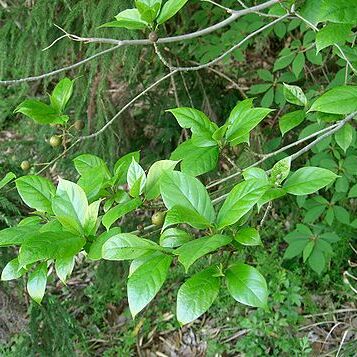Shrub or treelet up to 5 m tall. Leafy twigs 2-6 mm thick, glabrous or sparsely white appressed-puberulous; periderm persistent. Leaves spirally arranged; lamina elliptic to oblong to (sub)obovate, 5-18 by 1.5-8.5 cm, chartaceous, apex acuminate, base obtuse to (sub)cordate, margin entire; upper surface sparsely strigillose or glabrous, scabridulous or smooth, lower surface sparsely white appressed-puberulous on the main veins; cystoliths only beneath; lateral veins 4-9 pairs, the basal pair hardly different from the other lateral veins, tertiary venation loosely scalariform to almost reticulate; waxy glands in the axils of the basal lateral veins; petiole 1-3 cm long, glabrous, the epidermis persistent; stipules 0.7-1.6 cm long, glabrous, caducous. Figs axillary, solitary; peduncle 0.5-2(-3) cm long; basal bracts 3, 2-2.5 mm long, white appressed-puberulous at the base; receptacle (sub)pyriform or subglobose and often stipitate up to 1 cm, 1.2-1.8 cm diam. when dry, sparsely white appressed-puberulous, dark purple at maturity, apex convex, ostiole c. 3 mm diam., ± prominent, the outer ostiolar bracts erect; internal hairs absent or very sparse and minute.
A fig. It is a shrub or small tree. It loses its leaves during the year. It grows 4 m high. The leaves are oval and 10-20 cm long by 4-10 cm wide. The figs occur singly. They are in the axils of leaves. They are 1-2 cm across. They are violet-black.


